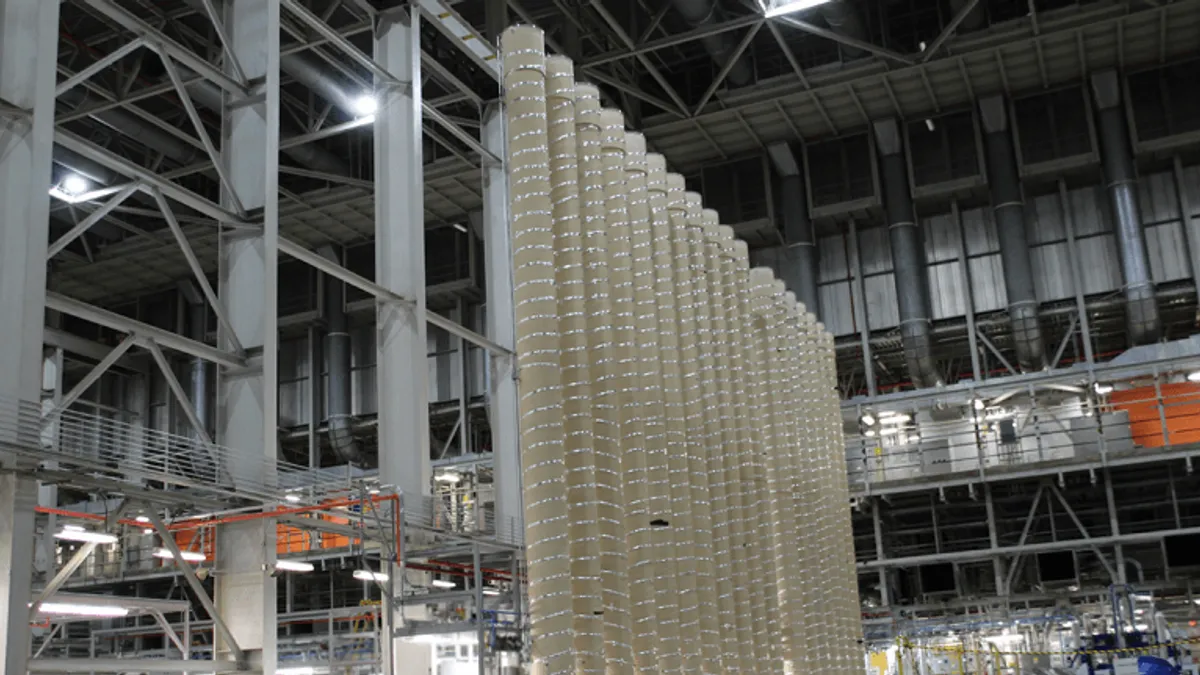Dive Brief:
- The U.S. Senate approved $2.7 billion in funding for domestic uranium enrichment on Feb. 13 as part of a $95.3 billion national security supplemental appropriations bill that also includes funding for military assistance to Ukraine and Israel.
- The measure repurposes unspent federal infrastructure funds to expand production of conventional low-enriched uranium, or LEU, and high-assay low-enriched uranium, or HALEU, at facilities in the United States, Nuclear Innovation Alliance Research Director Patrick White told Utility Dive in an interview.
- The bill faces Republican opposition in the U.S. House of Representatives over what they view as insufficient U.S. border security funding, but Democrats and some Republicans may use a rare procedural maneuver to force passage anyway, according to Roll Call.
Dive Insight:
If passed by the House and signed into law by President Biden, the bipartisan national security supplemental bill could fill a “significant” funding gap that threatens U.S. energy security in a decarbonized future, White said.
A 2023 Nuclear Innovation Alliance report called for a “one-time appropriation of $2.1 to $3.5 billion” that authorizes LEU and HALEU procurement through a revolving fund administered by the U.S. Department of Energy. Up to $1.4 billion of that is needed to support HALEU procurement, the report said. The Department of Energy will dole out $500 million in Inflation Reduction Act funding to domestic HALEU producers beginning this year, leaving an up to $900 million shortfall, which would be filled by the supplemental appropriations funding.
LEU, which contains 3% to 5% of the fissile uranium-235 isotope, is the dominant fuel type in civilian nuclear power generators, according to the World Nuclear Association. HALEU, which contains 5% to 20% uranium-235, features in several advanced nuclear reactor designs that could see commercial deployments over the next several years.
That includes small modular reactors, or SMRs, like the X-energy units set to power a planned Dow Chemical petrochemical plant in Texas, White said. Though not widely used in commercial applications today, HALEU is expected to play a much larger role in the nuclear power sector by the early 2030s.
“We’ll need to deploy dozens of advanced reactors each year to support deep decarbonization” amid an expected long-term surge in electricity demand, White said.
Funding for domestic HALEU production is critical because the only commercial source for U.S. civilian nuclear generators today is a Russian state-controlled enterprise. HALEU could be produced in the United States by “downblending” medical- and military-grade uranium to lower enrichment levels, but those existing domestic sources are in very short supply and problematic from a nuclear security standpoint, White said.
The other option for domestic HALEU producers is to use advanced centrifuge cascades to further enrich LEU, a cheaper and more plentiful material that already has a robust global supply chain, White said.
In June, the Nuclear Regulatory Commission approved Centrus Energy’s application to operate the United States’ first advanced centrifuge cascade at an Ohio facility that’s expected to produce up to 900 kilograms of HALEU this year. Along with offtake agreements that position the federal government as a buyer for domestic HALEU, the NRC’s approval could reduce would-be producers’ uncertainty over future demand and solve “the chicken-and-egg problem,” White said.
Still, questions persist around how quickly next-generation nuclear technologies can scale. Though a bipartisan pro-nuclear consensus is taking shape in Congress, new conventional civilian reactors — like Georgia Power’s Vogtle 3 and 4 — remain expensive and time-consuming to build.
While proponents like White tout SMRs and other advanced reactor designs as safer and more cost-effective, commercial deployments have been elusive, and some nuclear experts question their safety. Edwin Lyman, director of nuclear power safety at the Union of Concerned Scientists, told Utility Dive last year that even SMRs are vulnerable to catastrophic failures that “lead to large scale radiological contamination of the environment, massive economic damages and the potential for significant human health impacts.”














